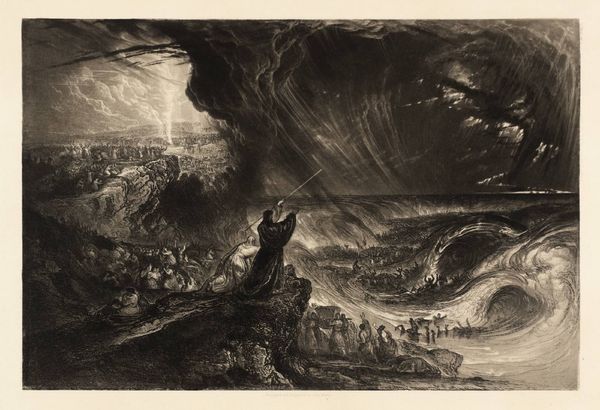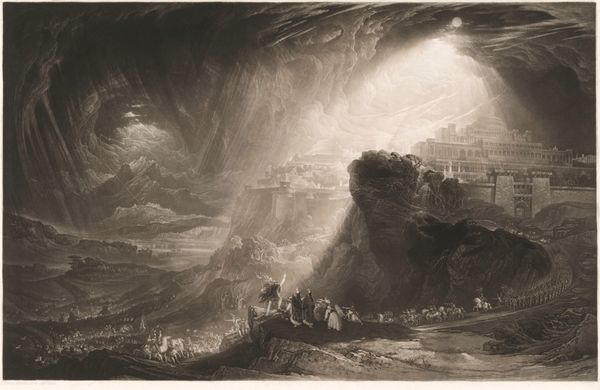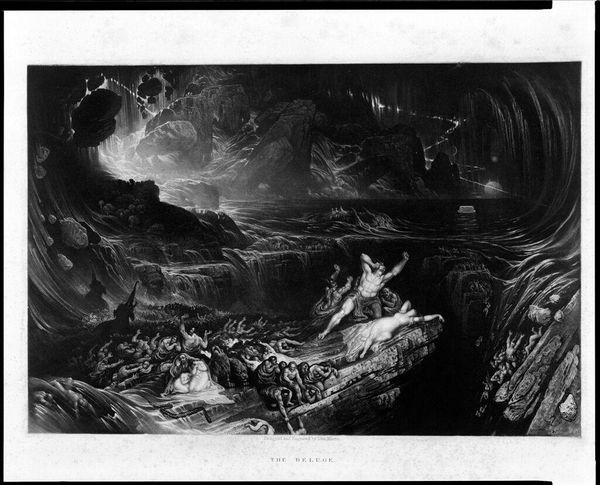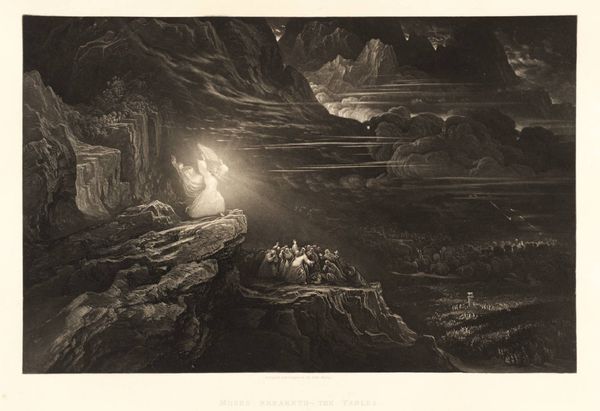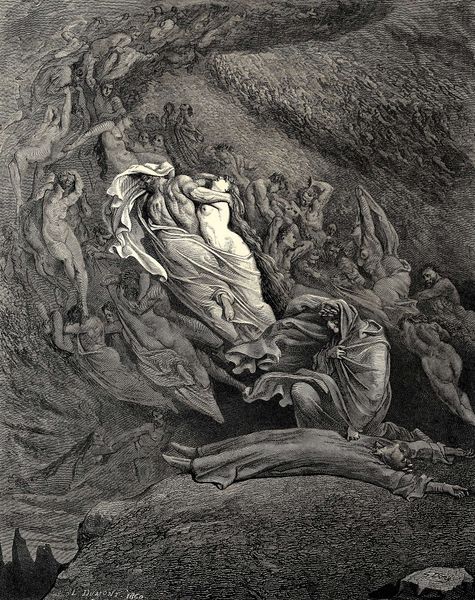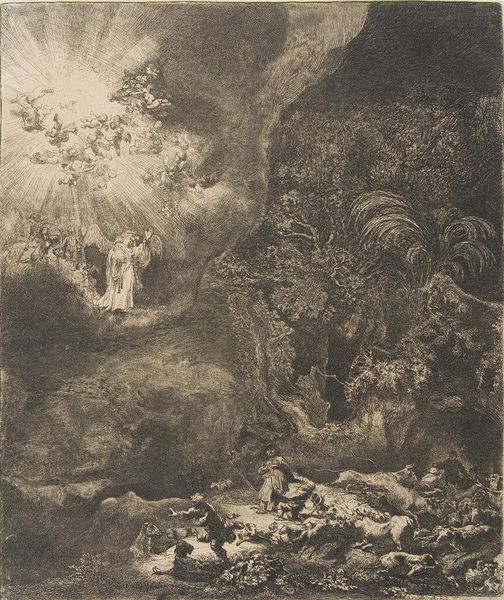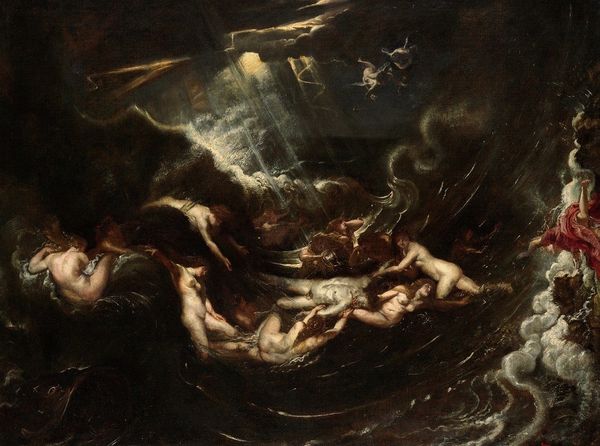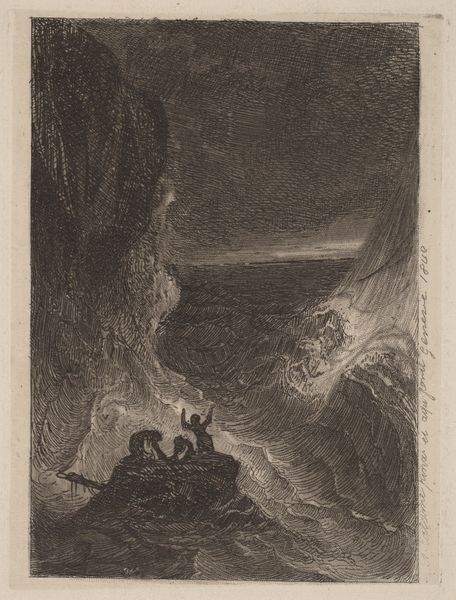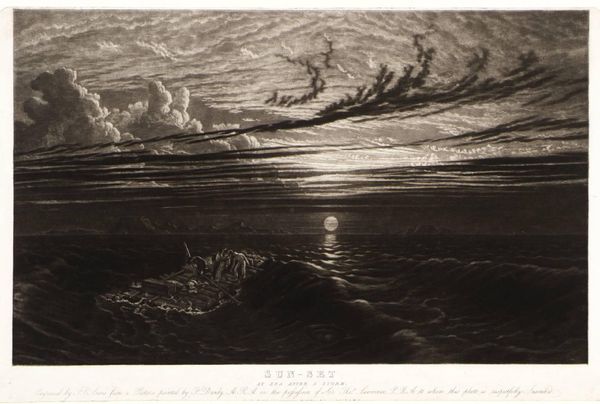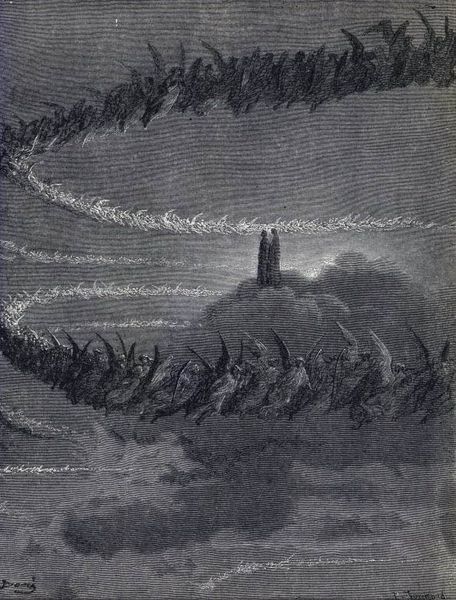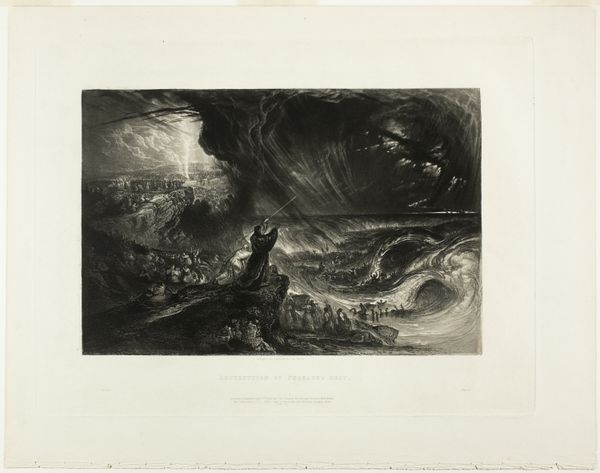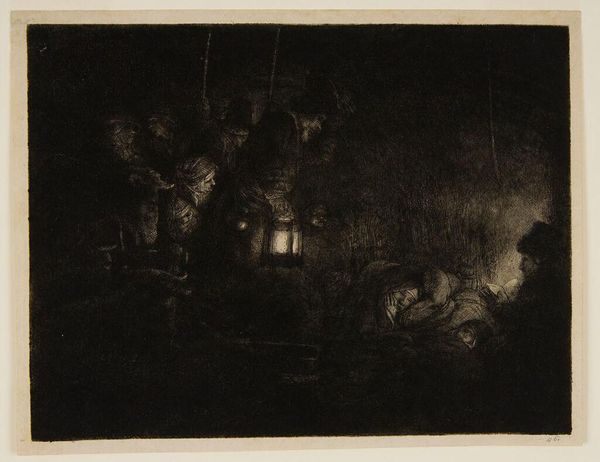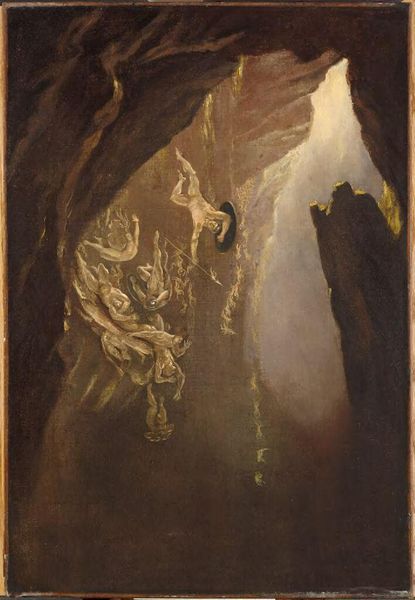
drawing, charcoal
#
drawing
#
narrative-art
#
landscape
#
charcoal drawing
#
figuration
#
charcoal art
#
romanticism
#
charcoal
#
history-painting
#
charcoal
#
sublime
Copyright: Public domain
Curator: Let’s turn our attention to John Martin's 1828 charcoal drawing, "The Evening of the Deluge." What strikes you first? Editor: A sense of overwhelming drama. The dark washes and jagged lines create an atmosphere of impending doom and utter chaos. Curator: Indeed. Martin often used biblical narratives to explore themes of divine power and human vulnerability. Consider the context: early 19th-century anxieties about industrialization, social upheaval, and, of course, religious faith permeated the period, particularly anxieties among those in marginalized communities struggling with the impacts of those things. His work offers a powerful reflection of this insecurity. Editor: The composition certainly reinforces that. Notice how the artist leads your eye upwards from the figures clustered on the rocks to the overwhelming, churning sky? The use of line to simulate rain and the gradations in tone really pull the whole scene together to emphasize this impending catastrophic event. Curator: Exactly. These aren't just people experiencing a flood, they represent populations who had, or feared they would soon have, everything taken from them. Martin’s personal radicalism against social injustice really speaks through this artwork. Editor: I find the dramatic use of light so captivating here, it really helps emphasize forms and direct our eyes. Even though we have primarily somber tones of charcoal, the artist manages to produce brilliant illumination that speaks to the core essence of the composition. Curator: That brilliance provides the necessary hope within this chaotic depiction of despair; it represents resilience. Martin’s artistic genius in combining charcoal with historical narrative and sociopolitical perspective gives us a reason to examine more deeply the conditions of our present and our potential future. Editor: Absolutely, it encourages viewers to look closely at the details—the expressions on the figures' faces and the gradations of darkness. Overall, a thought-provoking demonstration of visual technique.
Comments
No comments
Be the first to comment and join the conversation on the ultimate creative platform.

